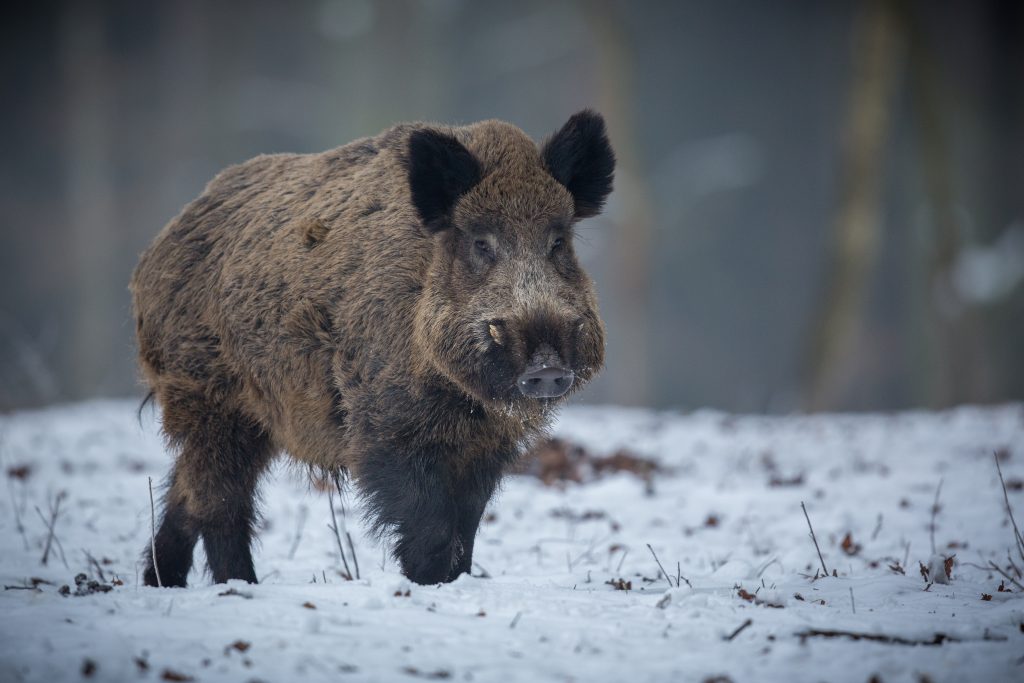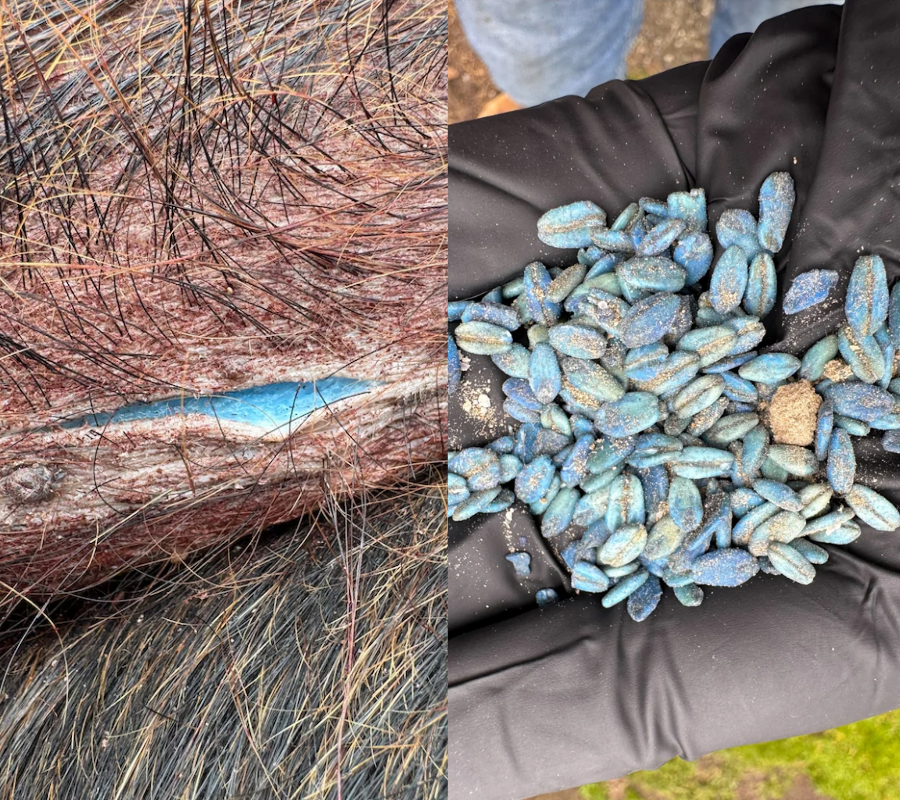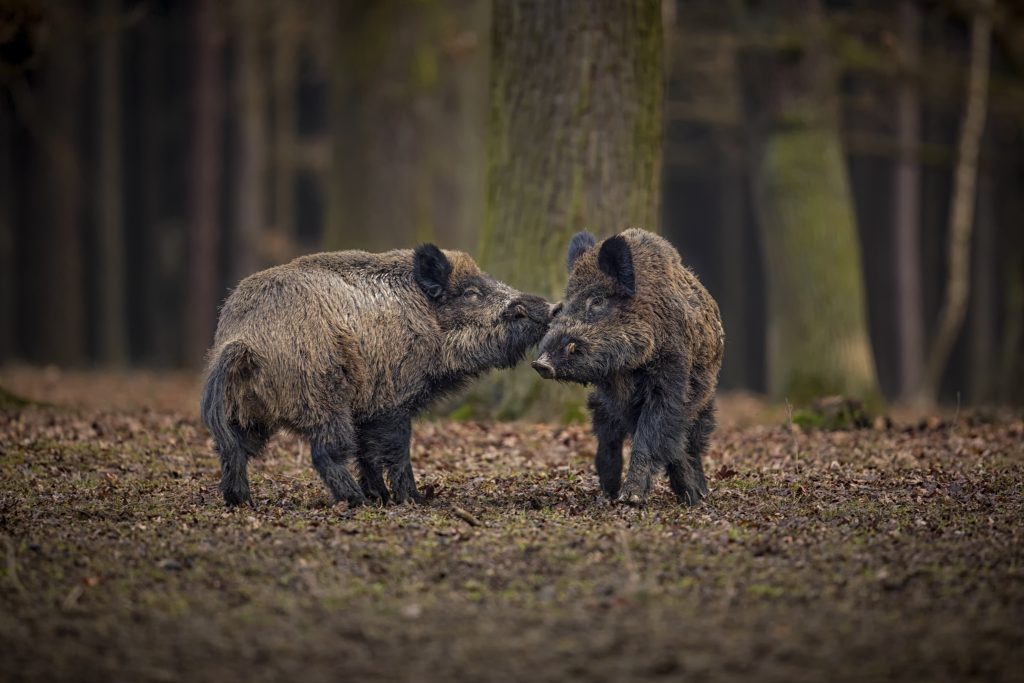
Hunters in Monterey County, California, are reporting a disturbing discovery: wild pigs with neon blue flesh inside their bodies. These animals, often hybrids of domestic pigs and wild boar (sometimes spelled wil boar, woild boar, or even wild bore) have long been a concern for ranchers and wildlife officials. However, pigs in blue, which some are calling “blueberry blue” and even “7/11 slushie blue,” are raising urgent questions. At Ecopetessentials, we are going to look at why “blue pig” is trending and how it concerns food safety, rodent control, and environmental health.

According to the California Department of Fish and Wildlife (CDFW), the strange coloring is due to diphacinone-laced oats. These are rodenticides, which are made to kill rats and mice. This poison is often dyed bright blue for easy identification. Unfortunately, wild pigs, being opportunistic feeders and true omnivores, are able to break into bait stations for ground squirrels. When the wild boars eat the toxic pellets, the toxin enters their system, leaving their tissues tinted an alarming blue. The blue coloring, sometimes described as blueberry blue, is not a natural phenomenon. It is a sign of contamination. Wildlife control experts warn hunters and consumers to treat such cases of exposed game with extreme caution.
Many hunters prize wild pig and wild boar meat for its flavor. As wild pigs, or wild boars, are an invasive species, you can hunt them legally with a permit and within hunting season. However, contaminated animals are a different matter. Studies show that even cooking does not eliminate the toxins left behind by rodenticides. The CDFW warns: if you ask, “Can you eat wild boar after it’s been poisoned?” the answer is no.

The alarming issue is that it stretches further than wild pigs. Animals that feed on poisoned rodents, such as owls, bobcats, and even bears, also face risk. Humans too may suffer secondary exposure if they consume contaminated game meat. Rodenticides like diphacinone act as anticoagulants and can lead to internal bleeding. Therefore, it is definitely harmful and even deadly for wildlife and people.
While many landowners tend to go for mouse poison or the so-called best rat killer products, many experts encourage a more balanced approach. If you are a landowner, then you need to install a broader pest management. This includes fencing, traps, habitat modification, and supporting natural predators instead of chemical-heavy methods. We’ve seen firsthand how poisons meant for pests can ripple across entire ecosystems. From the smallest rodent to the largest predator, collateral damage is real. Wildlife advocates are calling for stronger restrictions on toxic baits to protect vulnerable species and public health.

This isn’t the first case of a “blue pig.” Similar reports surfaced in 2015 and 2021. Each time, authorities traced the issue back to rodenticide. While the bright blue color may look surreal, it’s a reminder of the hidden dangers chemical poisons bring to wildlife, hunters, and the food chain. At Ecopetessentials, we keep an eye out for such bizarre happenings in the animal kingdom to help you understand it better. Therefore, we have to tell you that even if the meat looks like something out of a sci-fi movie, it is unsafe to eat. Hunters should treat neon blue meat as a red flag. For more insights on wildlife and safety, you can bookmark EcoPetEssentials

Isla Bennett loves Misty, her two-year-old British Shorthair. And she wants to help other pet parents make sustainable choices that are good for their pets and the planet. She writes about easy ways to care for animals using green products. Isla believes that happy pets and a healthy earth go hand in hand. Her goal is to make pet care simple, fun, and eco-friendly. She also gives you insights about different pet Breeds and traits!